Laying on of hands; あんしゅ
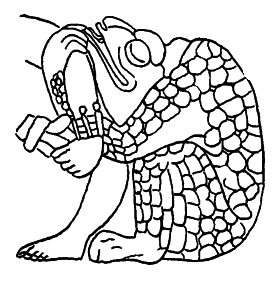
按手
Laying on of hands; あんしゅ

池田光穂
按手(=手を置くこと)は宗教的な行為である。ユダヤ教 では、セミカ(ヘブライ語: סמיכה、「[手を]傾ける」) [1]は祝福や権威の授与を伴う。キリスト教会では、キロトニー[2] は、主に洗礼と堅信、癒しの奉仕、祝福、司祭、牧師、長老、執事、その他の教会役員の叙階の際に、聖霊を呼び起こす象徴的かつ正式な方法として、他のさま ざまな教会の秘跡や神聖な儀式とともに使用される。手を置くという同様の習慣は、ナバホ族の宗教儀式でも使用される。[3]
| The laying on of
hands is a religious practice. In Judaism semikhah (Hebrew: סמיכה,
"leaning [of the hands]")[1] accompanies the conferring of a blessing
or authority. In Christian churches, chirotony[2] is used as both a symbolic and formal method of invoking the Holy Spirit primarily during baptisms and confirmations, healing services, blessings, and ordination of priests, ministers, elders, deacons, and other church officers, along with a variety of other church sacraments and holy ceremonies. A similar practice of laying on of hands is also used in Navajo religious ceremonies.[3] |
按手(=手を置くこと)は宗教的な行為である。ユダヤ教
では、セミカ(ヘブライ語: סמיכה、「[手を]傾ける」) [1]は祝福や権威の授与を伴う。 キリスト教会では、キロトニー[2] は、主に洗礼と堅信、癒しの奉仕、祝福、司祭、牧師、長老、執事、その他の教会役員の叙階の際に、聖霊を呼び起こす象徴的かつ正式な方法として、他のさま ざまな教会の秘跡や神聖な儀式とともに使用される。 手を置くという同様の習慣は、ナバホ族の宗教儀式でも使用される。[3] |
| Semikhah The laying on of hands was an action referred to on numerous occasions in the Hebrew Bible to accompany the conferring of a blessing or authority. Moses ordained Joshua through semikhah—i.e. by the laying on of hands: Num 27:15–23, Deut 34:9. The Bible adds that Joshua was thereby "filled with the spirit of wisdom". Moses also ordained the 70 elders (Num 11:16–25). The elders later ordained their successors in this way. Their successors in turn ordained others. This chain of hands-on semikhah continued through the time of the Second Temple, to an undetermined time. The exact date that the original semikhah succession ended is not certain. Many medieval authorities believed that this occurred during the reign of Hillel II, circa 360 CE.[4] However, it seems to have continued at least until 425 CE when Theodosius II executed Gamaliel VI and suppressed the Patriarchate and Sanhedrin.[5] Laying on of hands can also refer to the practice of laying hands over one's sacrificial animal (sin-offering), before it was slaughtered,[6] based on a teaching in Leviticus 4:24: "And he shall lay his hand upon the head of the goat." In Pseudo Jonathan's Aramaic translation of the Pentateuch, the translator of the verse explains its sense: "And he shall lay his right hand with force on the head of the goat." According to Philo of Alexandria, the custom of laying on of hands was done in conjunction with a declaration, where the owner of the animal would say: "These hands have not taken a bribe to distort justice, neither have they divided the spoil, etc."[7] According to Jewish tradition, the first dispute in Israel concerned whether or not it was permissible to lay hands upon one's sacrificial animal by applying one's full body weight on a Festival Day.[8] |
セミカー(ユダヤ教におけるい按手) 手を置くことは、ヘブライ語聖書の中で祝福や権威の授与を伴う行為として何度も言及されています。 モーセはセミカ、つまり按手によってヨシュアを聖任しました:民数記 27:15–23、申命記 34:9。聖書は、ヨシュアがそれによって「知恵の霊に満たされた」と付け加えています。モーセはまた、70 人の長老たちを任命しました (民数記 11:16-25 )。長老たちは後にこのようにして後継者を任命しました。彼らの後継者は順番に他の人を叙階しました。この実践的なセミカーの連鎖は、第二神殿の時代か ら、時期は未定まで続きました。オリジナルの正確な日付セミカ王位継承が終わったかどうかは定かではない。多くの中世当局は、これは西暦 360 年頃のヒレル 2 世の治世中に起こったと信じていました。[4] しかし、少なくとも西暦 425 年にテオドシウス 2 世がガマリエル 6 世を処刑し、総主教庁とサンヘドリンを弾圧するまでは続いたようです。[5] 手を置くことは、レビ記4:24の教えに基づいて、屠殺される前に自分の犠牲動物 (罪の捧げ物) の上に手を置く習慣を指すこともあります。ヤギの頭。」偽ヨナタンによるモーセ五書のアラム語訳では、この節の翻訳者がその意味を次のように説明していま す。「そして彼は右手を力を込めてヤギの頭に置くであろう。」アレクサンドリアのフィロによれば、手を置く習慣は宣言と併せて行われ、動物の飼い主はこう 言う、「この手は正義を歪めるために賄賂を受け取ったわけではないし、戦利品を分け与えたわけでもない、など」 。ユダヤ人の伝統に基づくイスラエルでの最初の論争は、祭りの日に自分の体重をかけて犠牲動物に手を置くことが許されるかどうかに関するものだった。 [8] |
| Christian laying on of hands In the New Testament the laying on of hands was associated with the receiving of the Holy Spirit (see Acts 8:14–19). Initially the Apostles laid hands on new believers as well as believers (see Acts 6:5–6). The New Testament also associates the laying on of hands with the conferral of authority or designation of a person to a position of responsibility. (See Acts 6:6, Acts 13:3; and 1 Timothy 4:14. Also possibly Acts 14:23, where "ordained"—Greek: χειροτονήσαντες—may be translated "extended the hand".) The use of the laying on of hands for the ordination of church officers has continued in many branches of Christianity. Anglicanism Laying on of hands is part of Anglican confirmation,[9] anointing of the sick,[10] and other parts of liturgy and pastoral offices. The rubric in the confirmation service requires the bishop to lay only one hand, symbolising that he has less spiritual authority than an apostle who laid both hands. Catholicism In the Roman Catholic Church, the practice continued and is still used in a wide variety of church ceremonies, such as during confirmation. Eastern Christianity In Eastern Christianity, laying on of hands is used for the ordination (called cheirotonia) of the higher clergy (bishops, priests and deacons), and is also performed at the end of the sacrament of unction. Evangelicalism In Evangelical Christianity, the laying on of hands takes place for pastoral ordination.[11] Baptists In few Baptist churches, the laying on of hands rarely takes place after a believer's baptism although this is traditional to some sects and not practiced as a Biblical command nor example.[12] This is one of the two points which was added in the 1689 Baptist Confession of Faith in 1742.[13][14] Southern Baptist Christians employ the laying on of hands during the ordination of clergymen (such as deacons, assistant, and senior pastors) as well as situations of calling for divine healing. Pentecostalism Pentecostal Christians practice the laying on of hands as part of prayer for divine healing (faith healing) and the anointing of the sick.[15] Former Australia Prime Minister Scott Morrison practises the laying on of hands. Latter-day Saints Members of the Church of Jesus Christ of Latter-day Saints believe the restoration of Christ's priesthood came about by the laying on of hands by the resurrected John the Baptist to Joseph Smith and Oliver Cowdery in 1829,[16] and laying on of hands is seen as a necessary part of Confirmation.[17] Latter-day Saints lay on hands when ordaining members to[18] to the Aaronic and Melchizedek priesthoods and when setting members apart to serve in other positions in the church.[19] When asked by a member who is ill, two elders of the Church anoint the sick member's head with consecrated olive oil and then lay hands upon their head and as guided by the Holy Spirit, bless them.[20] African traditional medicine The San peoples of Southern Africa use the laying on of hands as a healing practice. As described by professor Richard Katz, the healers of the !Kung people lay their hands on a sick person to draw the sickness out of them and into the healer in a "difficult, painful" process.[21] |
キリスト教の伝統 新約聖書では、手を置くことは聖霊を受けることと関連付けられていました(使徒 8:14-19参照)。当初、使徒たちは信者だけでなく新しい信者にも手を差し伸べました(使徒6:5-6参照)。 新約聖書ではまた、按手は権威の授与や責任ある地位への任命と関連付けられています。(使徒 6:6、使徒 13:3、およびテモテ第一 4:14を参照。おそらく使徒 14:23の「定められた」(ギリシャ語: χειροτονήσαντες)は「手を差し伸べた」と訳される可能性もあります。)教会役員の叙階のために人手が集まることは、キリスト教の多くの支 部で続いている。 英国国教会 按手は聖公会の堅信[9] 病人への油注ぎ[10]や典礼や司牧のその他の部分の一部である。堅信式のルーブリックでは、司教は片手だけを置くことを求めており、両手を置く使徒より も司教の霊的権威が低いことを象徴している。 カトリック ローマ カトリック教会ではこの習慣が続き、堅信式などさまざまな教会の儀式で今でも使用されています。 東方キリスト教 東方キリスト教では、按手は高等聖職者(司教、司祭、執事)の叙階(ケイロトニアと呼ばれる)に使用され、また、叙階の秘跡の最後にも行われます。 福音主義 福音主義キリスト教では、司牧叙階のために按手が行われます。[11] バプテスト派 少数のバプテスト教会では、信者の洗礼後に按手はめったに行われませんが、これは一部の宗派にとって伝統的なものであり、聖書の命令や例として実践されて いません。[12]これは、 1742 年に1689 年のバプテストの信仰告白に追加された 2 つの点のうちの 1 つです。[13] [14] 南部バプテストのキリスト教徒は、聖職者 (助祭、助手、牧師など) の叙階の際に按手を採用しています。および上級牧師)、また神の癒しを求める状況も同様です。 ペンテコステ主義 ペンテコステ派のキリスト教徒は、神の癒し(信仰の癒し)と病人の油注ぎを求める祈りの一環として、手を置くことを実践しています。[15]元オーストラ リア首相スコット・モリソンが手を置く練習をしている。 末日聖徒イエス・キリスト教会(モルモン教徒) 末日聖徒イエス・キリスト教会の会員は、キリストの神権の回復は、 1829年に復活した洗礼者ヨハネがジョセフ・スミスとオリバー・カウドリに按手したことによって実現したと信じている[16]。確認の必要な部分とみな されます。[17] 末日聖徒は、会員をアロン神権とメルキゼデク神権に任命するとき[18]、および会員を教会内の他の役職に任命するときに手を置いていた。[19] 病気の会員から尋ねられたとき、教会の二人の長老は、病気の会員の頭に聖別されたオリーブオイルを塗り、頭に手を置き、聖霊の導きに従って彼らを祝福しま す。[20] アフリカの伝統医学 アフリカ南部のサン族は、癒しの実践として手を置くことを使用します。リチャード・カッツ教授が説明したように、クン族の治療者は病人に手を置いて、「困 難で苦痛を伴う」プロセスで病気をその人から引き出し、治療者の中に引き入れます。[21] |
| Royal touch The laying on of hands, known as the royal touch, was performed by kings in England and France, and was believed to cure scrofula (also called "King's Evil" at the time), a name given to a number of skin diseases. The rite of the king's touch began in France with Robert II the Pious, but legend later attributed the practice to Clovis as Merovingian founder of the Holy Roman kingdom, and Edward the Confessor in England. The belief continued to be common throughout the Middle Ages but began to die out with the Enlightenment. Queen Anne was the last British monarch to claim to possess this divine ability, though the Jacobite pretenders also claimed to do so. The French monarchy maintained the practice up until the 19th century. The act was usually performed at large ceremonies, often at Easter or other holy days. |
ロイヤルタッチ(王の按手) ロイヤルタッチとして知られるこの手を置くことは、イギリスとフランスの王によって行われ、多くの皮膚病に付けられた名前であるスクフラフラ(当時は「王 の悪」とも呼ばれた)を治すと信じられていました。王の接触の儀式は、フランスで敬虔なロベール 2 世によって始まりましたが、伝説によれば、後にこの習慣は神聖ローマ王国のメロヴィング朝の創始者であるクロヴィスと、イギリスのエドワード懺悔王による ものであると考えられています。この信仰は中世を通じて一般的であり続けましたが、啓蒙主義とともに廃れ始めました。アン女王はこの神聖な能力を持ってい ると主張した最後の英国君主でしたが、ジャコバイトの 僭称者たちもそう主張しました。フランス君主制は 19 世紀までこの慣習を維持しました。この行為は通常、大規模な儀式で、多くの場合イースターやその他の聖なる日に行われました。 |
| Anointing Exorcism Faith healing Gifts of healing Gift of miracles Holy anointing oil Hypnosis Manual therapy Ordination Pneumatology Priesthood blessing Reiki Right hand of Christian fellowship Snake handling Speaking in tongues Spiritual gift Spirituality Superstition Thaumaturgy Scott Morrison |
油注ぎ 悪魔祓い 信仰の癒し 癒しの贈り物 奇跡の贈り物 聖なる油注ぎ 催眠術 徒手療法 叙階 空気学 神権の祝福 レイキ キリスト教徒の交わりの右腕 ヘビの取り扱い 異言で話す スピリチュアルな贈り物 スピリチュアリティ 迷信 奇跡術 スコット・モリソン |
| https://en.wikipedia.org/wiki/Laying_on_of_hands |
Google translator |
●参照のための映像(按手)
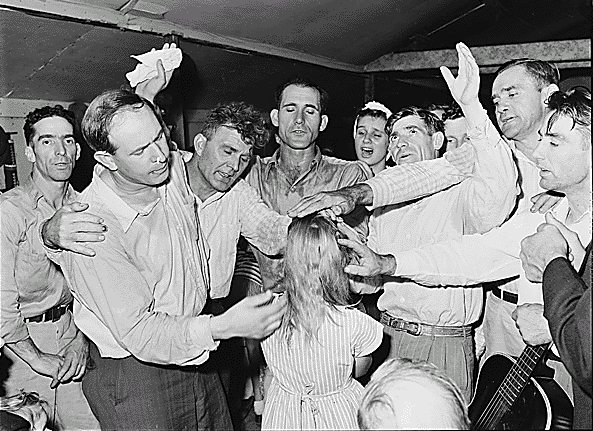
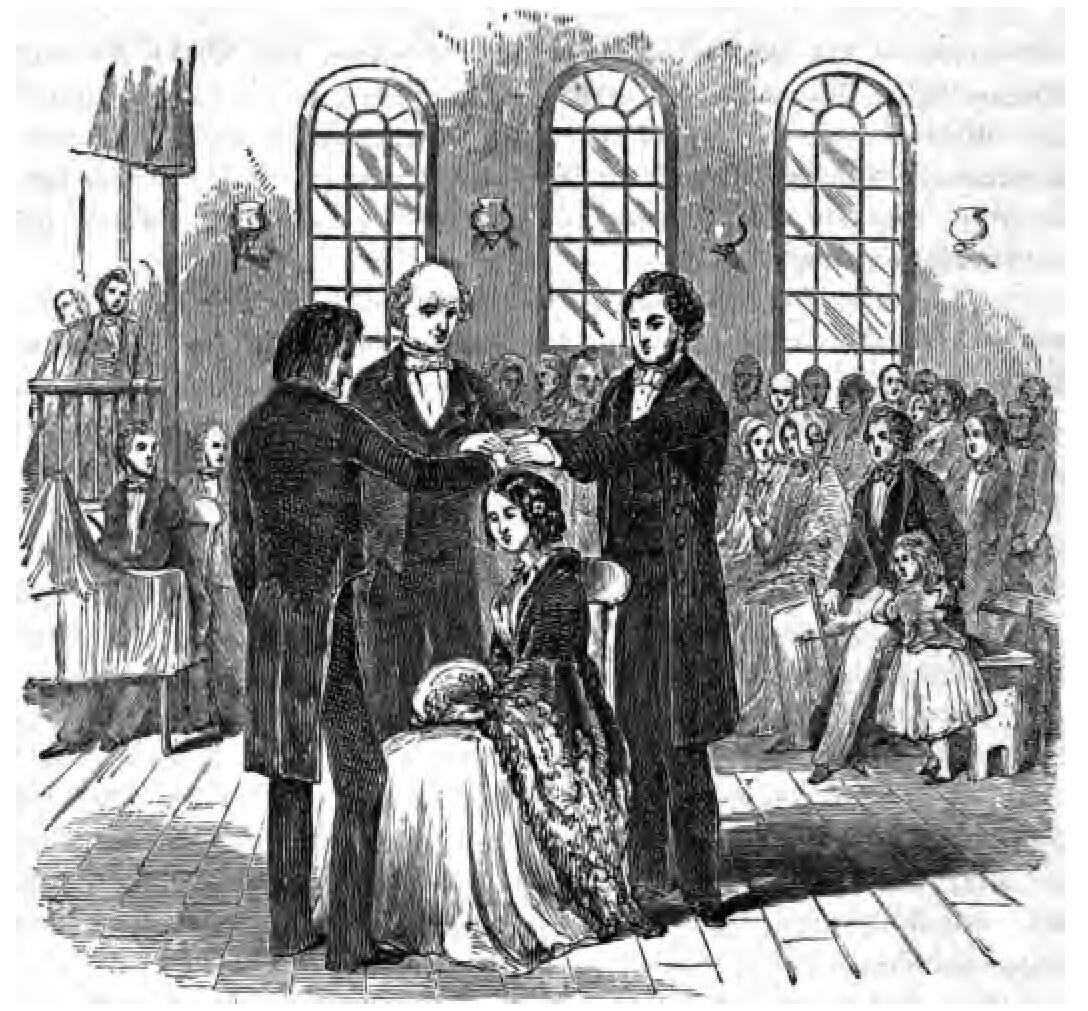
ペンテコステ派集会における按手:「カリスマ運動」/ An 1850s depiction of a Latter Day Saint confirmation featuring the laying on of hands
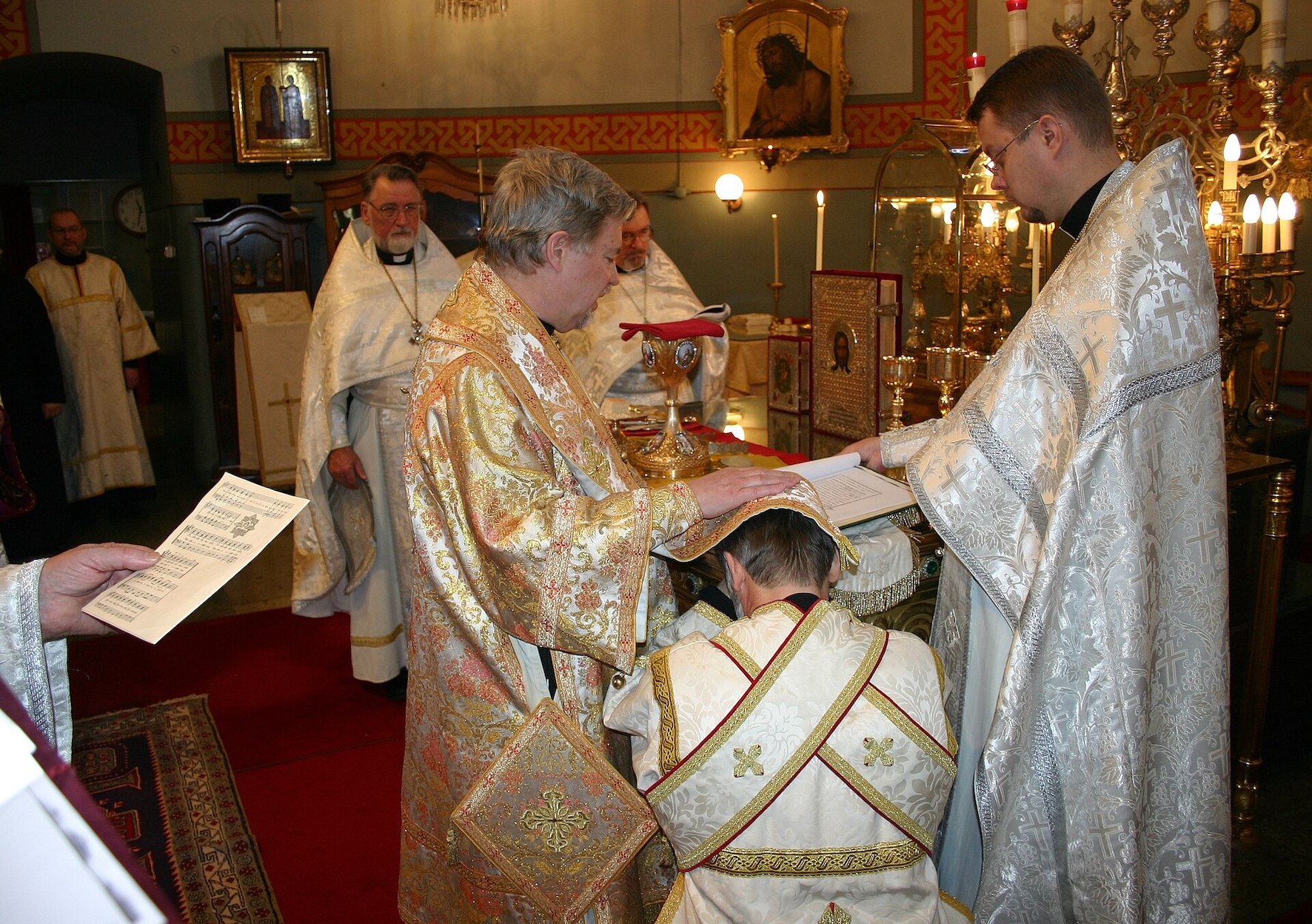
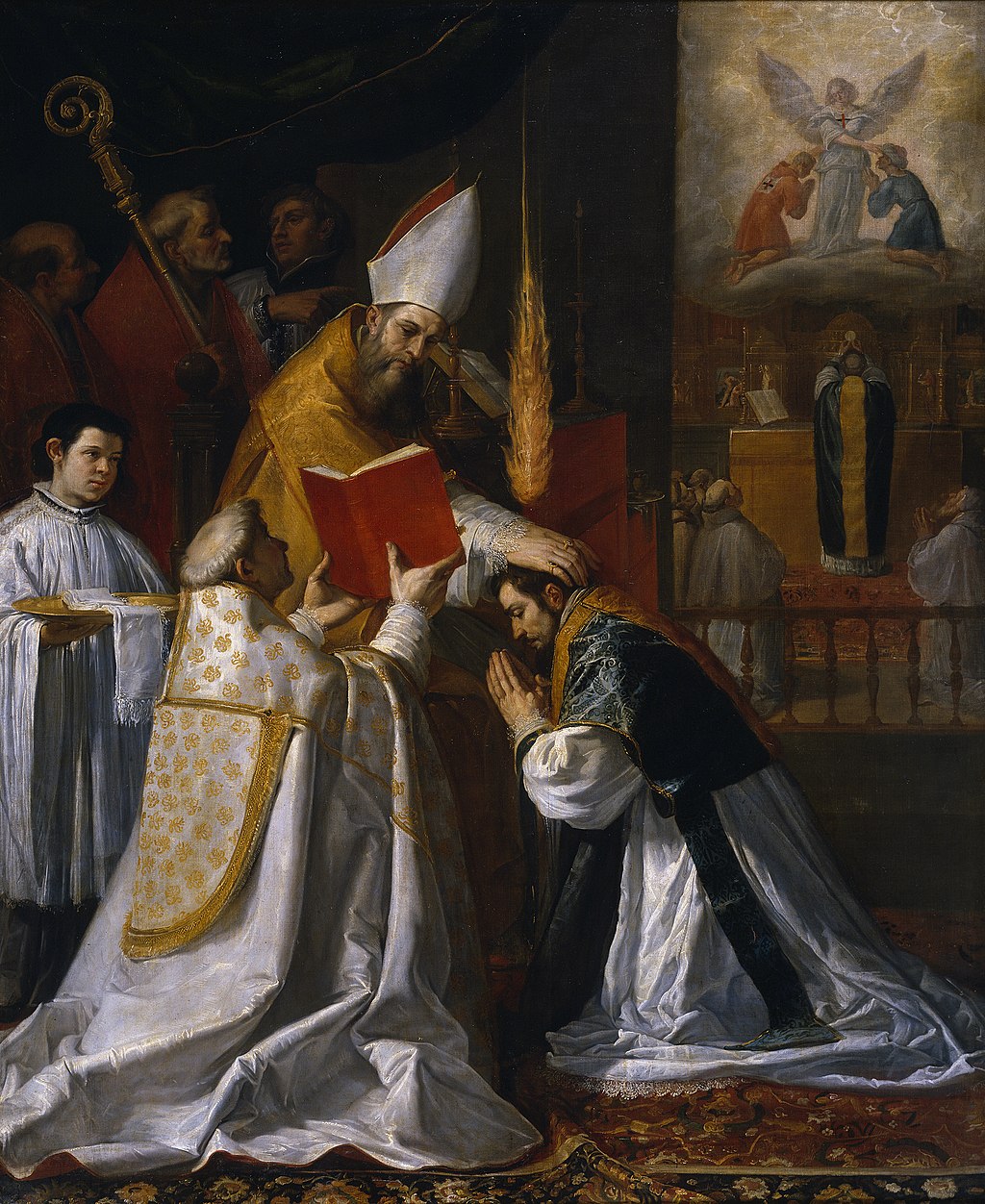
正教会の神品機密(Holy orders)/
Ordination of John of Matha
資料リンク
文献
Copyleft,
CC, Mitzub'ixi Quq Chi'j, 1996-2099